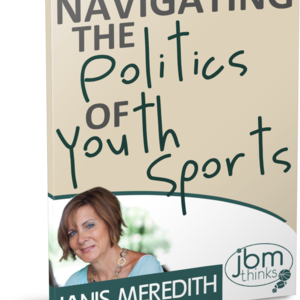In Part 1 of Keeping Our Head in the Game, we explored what exactly are concussions, sign & symptoms, and how to make a difference on the concussion front today. To finish off Brain Awareness Week, we’ll discuss what kids are more prone to concussion and why. In Part 3 to be posted March 28 to close out Brain Injury Awareness month, we’ll discuss prevention measures and treatment of concussion.
One of the most susceptible groups of kids to possibly experience a concussion is a child that has already had one, especially one that has gone undiagnosed and is still in the healing phases. Second Impact Syndrome results from acute brain swelling occurring when a second concussion is sustained before damage from an initial concussion is completely healed. After a concussion, one typically displays decreased balance, decreased visual perception, and increased reaction time which may lead to more falls, loss of balance, or non-reaction to a hit resulting in another blow to the head. Therefore, it is extremely important to recognize a possible concussion, and sit the child immediately to prevent further, even fatal, damage. The risk of subsequent concussion is 3-6 times higher in a football player who has sustained a concussion recent or past, and 4-6 times higher for soccer players, according to the American Association of Neurological Surgeons. Other sports with high SIS risks are boxing, hockey, basketball, and snow skiing/boarding. When in doubt, sit them out.
Another group of kids that are more susceptible to concussion are those with Attention Deficit Disorder (click to read related article), not only because this group sometimes display balance and coordination deficits, but they are also the risk takers seeking excitement, action, and physical contact. This isn’t a bad thing, as these are the kids that may grow up to be soldiers fearlessly saving others lives! Travis Pastrana, motocross rider, is a great example of a risk taker from a young age. He is one of just a few people to recover from a dislocated spinal column as a teenager, he’s suffered over 25 concussions, yet he continues to be a thrill seeker. His orthopedic surgeon, Dr. Tom Davis, stated in a book written about Pastrana 199 Lives, “he [Travis] has no fear which gives him the ability to keep pushing the envelope and I think he has congenital insensitivity to pain”. This “congenital insensitivity to pain” seems to be true for some children, often those with an ADD diagnosis, which make it more difficult to identify them for some injuries, including concussion.
Besides the prevalence of ADD diagnosis in our kids today, children have brains which are not fully developed until adulthood. Even in adulthood, our brains change and can be rewired for the positive or negative, which makes the brain such an amazing organ! However, since kids do not have the coating and insulation around nerves and connections like adults, their brains are more easily damaged, and may take longer to heal after a brain injury. 80% of kids recover in 7-10 days while the other 20% take longer. Regardless of the healing time immediately following concussion, the effects of repeated damage is now being discovered many years later, not just in NFL players but in the general population too. The cause is not always sport related concussions. Motor vehicle accidents and physical abuse were also a large cause. I personally explored, and learned treatment of, cases such as this when I visited the Amen Clinic (click to learn more) this week in Atlanta, GA. Protecting the brain for the present and future is so important, regardless of the sport or everyday play.
Education is the most important thing we can do immediately to reduce traumatic brain injury in children, not just in sports but in everyday life. This is the ultimate goal of our blogs this month. Talking about brain injuries in children is scary, but the more you learn, the more you are aware of what to do and know how to handle situations when they arise. If you or anyone you know would like more information on anything you’ve read in this blog including our personal experience at the Amen Clinic this week, visit www.mycoreimpact.com and fill out the contact info. You can also visit our Facebook page, and message us directly. Together we can give our kids a better life now, and a better brain healthy future.




